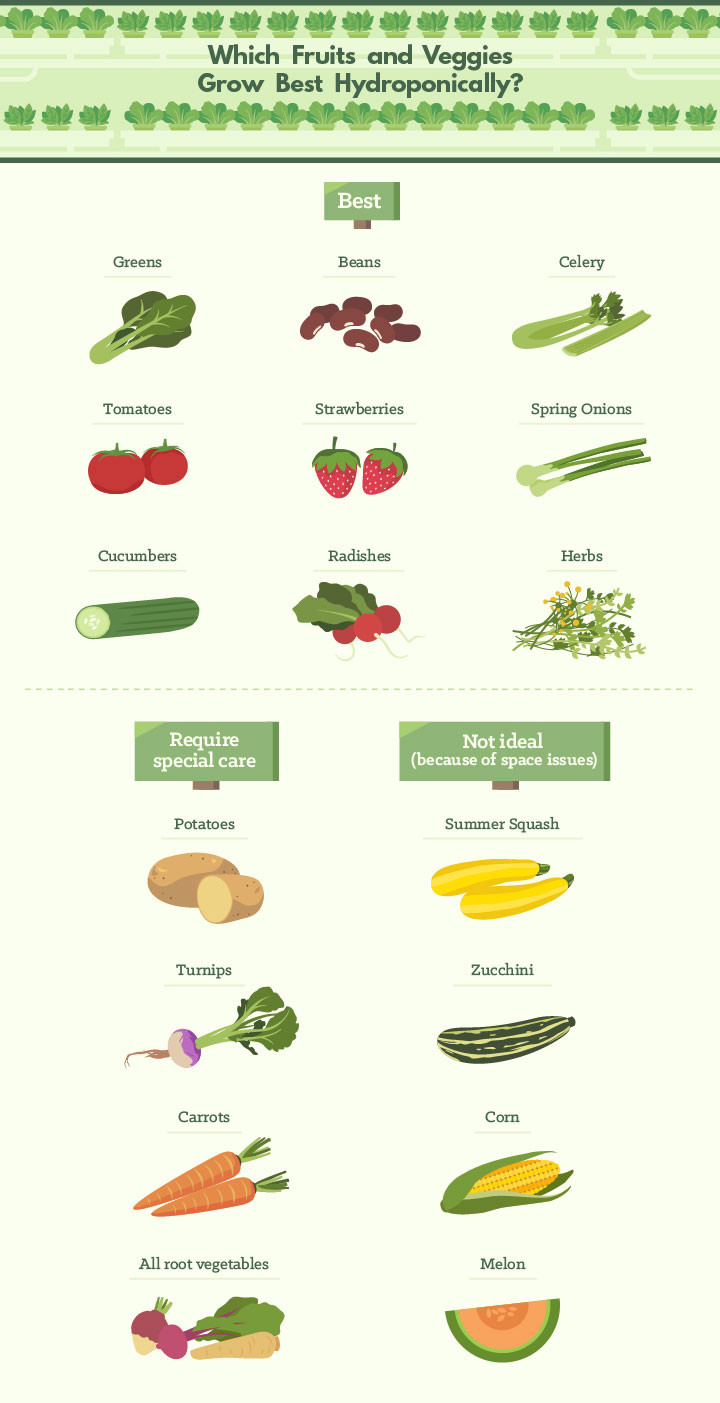The science of soilless gardening is called hydroponics. It may sound like something devised in a modern laboratory, but it’s been around for thousands of years. The essential ingredient is an oxygenated mineral-nutrient solution that’s circulated through plants’ roots.
Today many people identify hydroponics with marijuana growers, who’ve made use of the technology. But much of the world’s greenhouse produce is now grown in hydroponics systems, including some of the lettuce, tomatoes, herbs, and veggies in many supermarkets’ refrigerated cases.
Why Hydroponics?
Growing food without dirt, earthworms, and, sometimes, sunshine may go against common ideas of where healthy food comes from. But hydroponics has taken off for good reason. It offers a number of benefits over traditional soil methods and it may even help solve some of the world’s growing problems.
Water Conservation
Agriculture currently uses 80 percent of the fresh water consumed in the U.S. and 60 percent of it worldwide. Meanwhile a water scarcity crisis currently plagues every continent, particularly arid regions such as the American West.
Land Conservation
Water is not the only resource in short supply. Many countries, including Great Britain, may face a significant shortage of farmland in the next two decades. Some studies estimate crop yield must double by 2050 to meet projected demands, and scientists warn that will not happen if current trends continue. In the past we’ve cleared forests and grasslands to plant crops, with grave environmental consequences. What if there’s a better way?
Less Pesticide Use and Runoff Pollution
Agriculture is the leading cause of water quality problems in the U.S., and pesticides, including endocrine-disrupting atrazine, currently contaminate our watersheds and drinking water.
Food Safety
We’ve all gotten used to headlines about deadly E.coli outbreaks. Twenty-three percent of foodborne illness deaths and 46 percent of foodborne illnesses are linked to eating produce, according to the Center for Disease and Prevention. Soil polluted by livestock waste is often pinpointed as the cause.
Lower Food Miles
An eat-local movement has erupted across the country. Local produce is usually more nutritious, since vitamin content is depleted by light, temperature, and time. Moreover, local food doesn’t require the expense and energy expenditure of long-distance trucking. But how can people grow food in dense urban centers or inhospitable climates? Hydroponics may be the answer.
Potential Downsides of Hydroponics
- It can be expensive. Growers, especially large-scale ones, must make an initial investment to buy pumps, pipes, basins, lights, air filters, and fans.
- Systems are made of fabricated materials, which require resources to build and maintain.
- Commercial nutrient solutions are often mined and produced in factories and they can be pricey.
- Systems, especially those with artificial lighting, can use a lot of electricity.
- Large systems require technical knowledge and careful monitoring.
Many of those challenges can be mitigated for small-scale home gardeners. Setting up a soilless system can be inexpensive and easy and it’s an excellent way to understand the principles and potentials of hydroponics.
DIY Hydroponics for the Home Gardener
The first and often most daunting decision for any gardener is what to grow. The best veggies to grow in any garden are the ones a person or family enjoys the most. But some plants tend to work better than others in small hydro-systems.
A small herb garden is a great way to get started. But before diving in, it helps to understand the basic parts and six different types of hydroponics systems.
With a little basic understanding, anyone can make a simple system. A passive wick system is the easiest to start with because it doesn’t require a pump, timer, or electricity. (For those not DIY-inclined, many companies offer hydroponic starter kits.)
Starter Purchase Suggestions:
- Indoor Tent: A search on Amazon will result in many options and many sizes.
- Emily’s Garden or the General Hydroponics Drip Ring Kit
- General Hydroponics Nutrient Solution Kit
- pH measurement pen
- EC/TDS measurement pen
- Measuring shot glass and cup
- pH Up and pH Down from General Hydroponics
- 4”-6” ventilation fan
- 6″ ventilation fan ducting
- 4” blower fan with filter
- Fluorescent Grow Light and/or LED Grow Light
- HPS Grow Light
- AC outlet mechanical timer
Please share with friends and click follow to receive a notification when I publish a new article. As I receive feedback from you, I will update these sections, so don’t be afraid to comment or send me your questions directly.





Very good guide. The infographics are especially helpful. Thank you!
LikeLike
Vielen Dank für die tolle Sicherheitsberatung, das hat sich gelohnt
LikeLike
Wahnsinn wie schnell ihr den Tresor öffnen konntet, sollte mir zwar zu denken geben aber vielen dank
LikeLike
Danke Top Service
LikeLike
Danke für die schnelle Hilfe. Preise wie abgemacht am Telefon.
LikeLike
Danke für die schnelle Hilfe heute Nacht, kann ich empfehlen
LikeLike